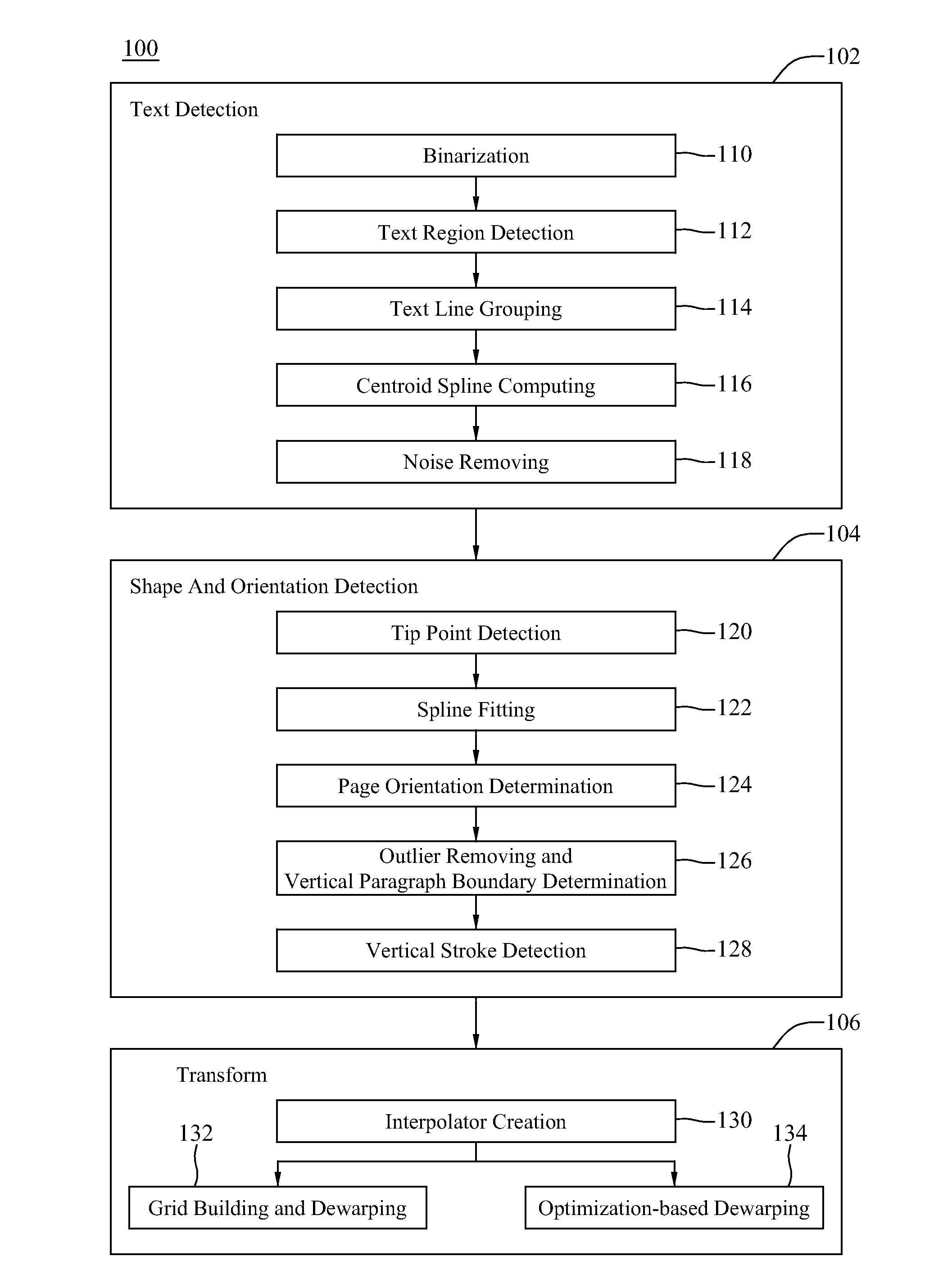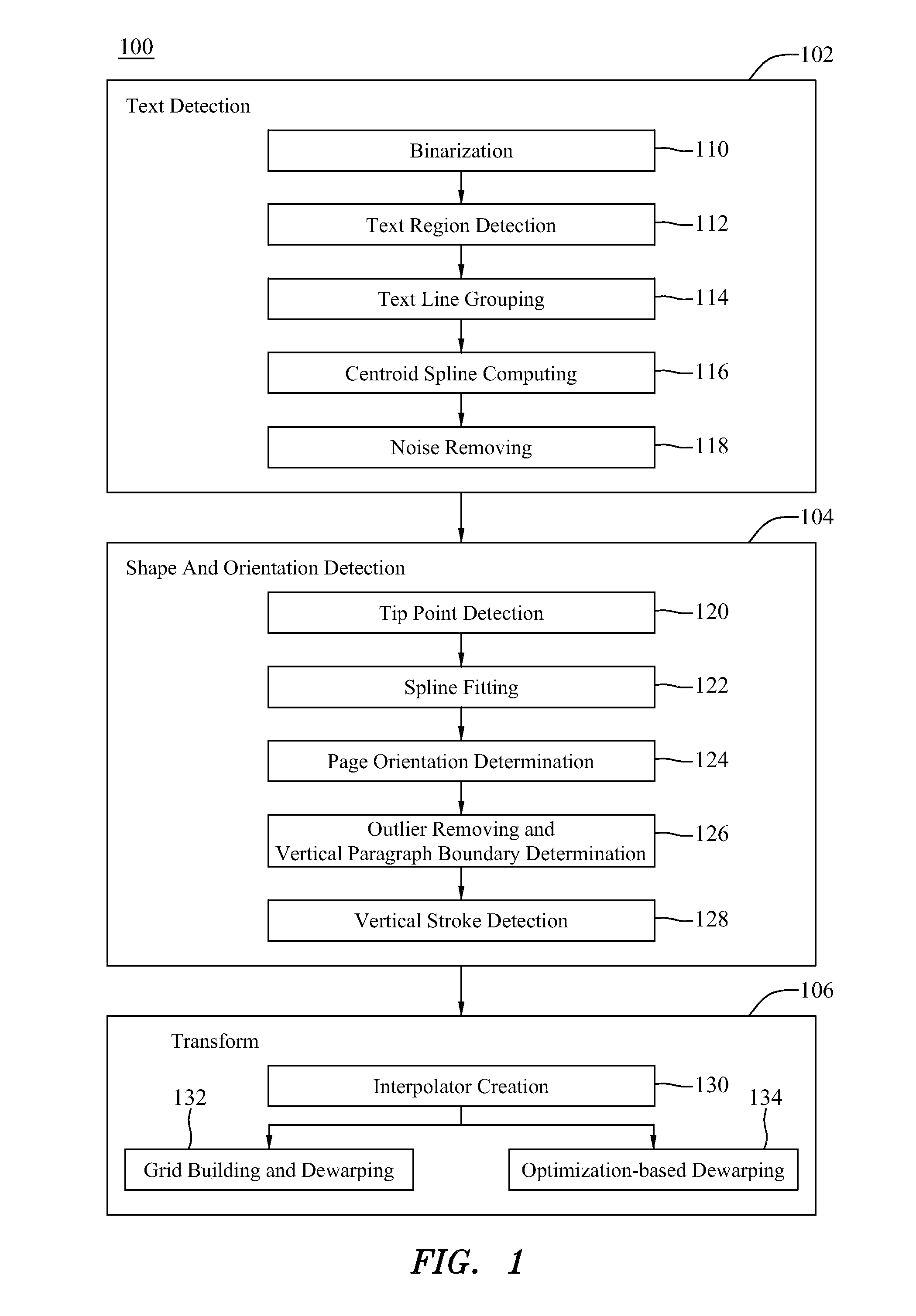Camera-based document imaging
a camera and document imaging technology, applied in image enhancement, instruments, character recognition, etc., can solve the problems of slow process, inconvenient processing, difficult to quickly and accurately scan documents,
- Summary
- Abstract
- Description
- Claims
- Application Information
AI Technical Summary
Benefits of technology
Problems solved by technology
Method used
Image
Examples
Embodiment Construction
[0032]Embodiments of the invention will now be described with reference to the drawings. To facilitate the description, any reference numeral representing an element in one figure will represent the same element in any other figure. FIG. 1 is a flow diagram illustrating steps of a camera-based document image dewarping process according to one embodiment of the present invention.
[0033]Referring to FIG. 1, a method 100 for dewarping a document image captured by a camera is provided. The method 100 involves analyzing the location and shape of the text lines included in the imaged document and then straightening them to a regular grid. In the illustrated embodiment, method 100 comprises three major steps: (1) a text detection step 102, (2) a shape and orientation detection step 104, and (3) an image transformation step 106. Each of the major steps may further comprise several sub-steps as described below.
[0034]1. Text Detection
[0035]The text detection step 102 finds pixels in the image ...
PUM
 Login to View More
Login to View More Abstract
Description
Claims
Application Information
 Login to View More
Login to View More - R&D
- Intellectual Property
- Life Sciences
- Materials
- Tech Scout
- Unparalleled Data Quality
- Higher Quality Content
- 60% Fewer Hallucinations
Browse by: Latest US Patents, China's latest patents, Technical Efficacy Thesaurus, Application Domain, Technology Topic, Popular Technical Reports.
© 2025 PatSnap. All rights reserved.Legal|Privacy policy|Modern Slavery Act Transparency Statement|Sitemap|About US| Contact US: help@patsnap.com



